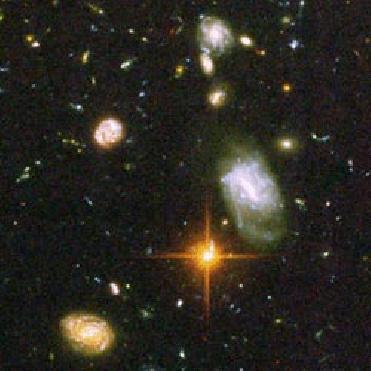
File photo of the Sun's corona, obtained during the solar eclipse on August 11, 1999. European Southern Observatory Photo
BANGALORE (PTI): After Chandrayaan-I moon odyssey, it's in a way "Mission Sun" for team ISRO.
Scientists at the Indian Space Research Organisation are in an advance stage of designing a spacecraft named 'Aditya' to study the outermost region of the Sun called corona.
"That's a mini satellite. In fact, the design is just getting completed," ISRO Chairman G Madhavan Nair told PTI.
"During solar maxim, which is happening. We would like to see the type of emissions which are taking place in the Sun and how it interacts with the ionosphere and atmosphere and so on," he said.
According to Dr Jayati Datta, Deputy Programme Director, Space Science Office, ISRO, Aditya is the first space based Solar Coronagraph intended to study corona.
'Aditya' would be the first attempt by the Indian scientific community to unravel the mysteries associated with coronal heating, coronal mass ejections and the associated space weather processes and study of these would provide important information on the solar activity conditions, she said.
"A basic understanding of the physical processes and continuous monitoring would help in taking necessary steps towards protecting ISRO's satellites either by switching them off or putting them on a stand-by mode as warranted by the background conditions," Datta Said.
The temperature of the solar corona goes beyond million degrees. From the Earth, corona can be seen only during total solar eclipses mainly due to the bright solar disc and the scattering of the sunlight by the Earth's atmosphere. One has to go beyond the atmosphere to be able to mask the bright solar disc and study the corona.
The Sun being a hot gas is highly turbulent and dynamic due to the burning of matter or in other words conversion of matter into energy. On several occasions, the Sun sends out large chunk of charged particles and emits highly energetic electromagnetic radiation in all directions.
These radiations on reaching Earth cause severe near-Earth-space disturbances called Geomagnetic storms which affect the communication links, disturb power lines in high altitudes, cause aurora in the polar regions and affect the satellite systems directly and also indirectly through the changes brought about in the near Earth atmosphere.
Coronal mass ejections (or CMEs) are huge bubbles of gas threaded with magnetic field lines that are ejected from the Sun over the course of several hours. Although the Sun's corona has been observed during total eclipses of the Sun for thousands of years, the existence of coronal mass ejections was not realised until the space age.
The earliest evidence of these dynamical events came from observations made with a coronagraph on the 7th Orbiting Solar Observatory (OSO 7) from 1971 to 1973.
A coronagraph produces an artificial eclipse of the Sun by placing an "occulting disk" over the image of the Sun thus enabling the monitoring of the sun during both its quiet and active phase, Dr Datta said.
During a natural eclipse of the Sun, the Corona is only visible for a few minutes at most, too short a period of time to notice any changes in coronal features. With ground based coronagraphs, only the innermost corona is visible above the brightness of the sky. From space the corona is visible out to large distances from the Sun and can be viewed continuously. One of the fundamental problems of the solar physics is the understanding of the processes through which the Solar Corona gets heated to such levels, she said.
According to the most recent understanding of the CME phenomenon, the physical processes responsible for a CME start right from the Solar interior, where the Solar magnetic field is generated. This magnetic field emerges into the photosphere and later into the Corona in the form of active region fields.
 Previous Article
Previous Article Next Article
Next Article











The Indian Air Force, in its flight trials evaluation report submitted before the Defence Ministry l..
view articleAn insight into the Medium Multi-Role Combat Aircraft competition...
view articleSky enthusiasts can now spot the International Space Station (ISS) commanded by Indian-American astr..
view article